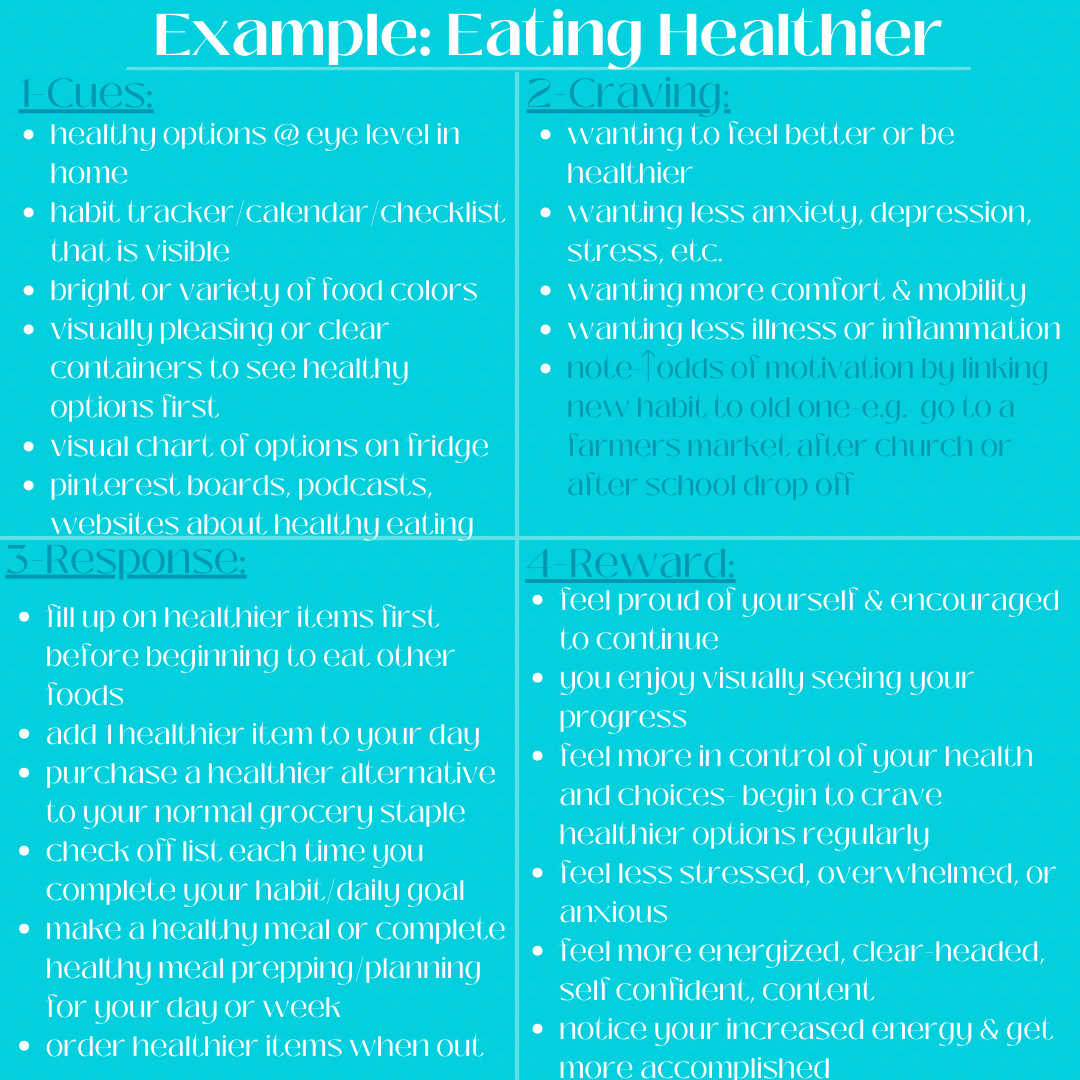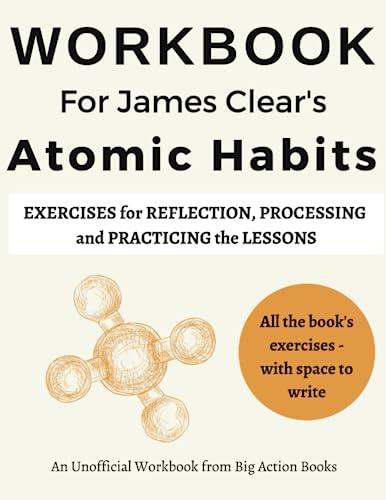You Are What You Repeat- Successful Habit Building
*this blog may contain amazon affiliated links as well as links to free resources
Everyone has habits, even the most go with the flow type of individual has habits. Which leg you use first to get dressed, what side of the bed you sleep on, whether you check your phone when you first wake up, even what colors or hues you lean towards when you’re picking something out are all habits. You’re likely not even aware of these behaviors in the moment. When we intentionally practice and reinforce healthy or desired habits, we build them into a routine or lifestyle. Healthy habits and routines can lead to life changing results. How? When we practice healthy habits and routines they become instinctual in the future. That means we use less mental energy reproducing them and their desired outcomes, reducing the mental load of our day. They also become a focus for future habits that we can build upon- even unconsciously as our brain sees similar tasks as desirable now. Strong habits actually give you more time and freedom in the long run by automating a behavior in your body.
Just imagine for a second the long-term impacts in your life if you built in the habit of always putting an item back in its place after using it. What if your family was able to do it too! Sounds lovely, right! Imagine the impacts of always putting your phone away an hour before bed. What would that eventually do to your ability to sleep at night, the quality of your sleep, your overall restlessness at night, or how you feel the rest of the week?
Too often, though, when we decide to actually start a new habit we think of it in these long-term goals instead of focusing on the manageable (and maybe boring) goals of right now that are critical to actual habit building. When we are only focusing on long-term goals (say losing weight) then as soon as we are faced with the discomfort of not seeing results, not feeling like we’re mastering it, or becoming unmotivated with the many steps to it, we are likely to quit working on that goal, preventing us from building a habit.
“Don’t judge each day by the harvest you reap but by the seeds that you plant”
So lets look at the example of losing weight solely because it is one of the most common resolutions individuals set. If someone starts with focusing on a certain weight goal (a specific number) then that desired goal is unlikely to last long-term, even if they reach it at some point, because their focus was on a number and not mindful of the path to getting there. (Not to mention setting numerical weight goals are also unrealistic because the same number can look drastically different on an individual at different points in their lives depending on what it’s actually measuring in their body (muscle, fat, water-weight) or between different individuals). Instead, focusing on addressing your relationship with your own body, your relationship with food, your relationship with societal pressure or a tendency to compare yourself, or on your own knowledge of the impacts of mobility, food, and stress would be better first steps- and the one you choose would need to be a small and easily accomplished step. This may mean reading about your health or listening to podcasts and committing only 2-5 minutes of your time each day to that task. Sounds like a boring or slow start right? It may be, but it is a critical one. Focusing too far in the future can jeopardize the success of our NOW. The strategies discussed in this blog look at how starting small and focusing on little behaviors can yield the biggest, long-term habits and routines for yourself by turning a current want into a future need in your brain. This is how lifestyle changes are made. This is how you rewire your brain to interact with the world differently.
Step 1- You Need To Mean It
Many experts in the field of habit-building agree that your first step is going to be your self talk and self view. Our negative self talk can be the first and largest thing to get in our way. Awareness of your cognitive distortions or the negative core beliefs you hold about yourself can be an important part in overcoming their negative influence on your motivation and success. You can check out this blog below about cognitive distortions as well.
Lets say someone wants to quit vaping or smoking. If they approach it by telling others that they are trying to quit, they are approaching it with the mindset that they may not be able to or aren’t fully committed to it. Whereas if they approach it by telling others “I don’t smoke” that’s a clearer message to themselves and to others. Obviously it will involve more than just that phrase for overall success, but that phrase sets the foundation for all future choices regarding that goal. Each habit, like what phrases we use, are mini goals. According to Christine Carter, PhD, and author of The Sweet Spot, it is the small daily behaviors of meeting these mini goals that lead to lifetime habits and changes. She discusses that your initial goals have to be small enough that even on days when you have little motivation, you know you can easily accomplish them instead of skipping them completely. That is because consistency is the key to building a habit. If we overreach in the beginning, our likelihood of being consistent is going to drop. It won’t feel as emotionally rewarding to start small, because we won’t see results fast, but remember, your long-term goal is “long-term” for a reason. If you can consistently complete your mini-goals then you can add to them and build from them. Your main task is repetition, not mastery. Mastery comes from building an actual habit that doesn’t require your focus to accomplish it.
Step 2- The Process of Habit Building
According to James Clear, best selling author of Atomic Habits, you need to focus on the system of habit building, not just the goals. Goals can set you on the path you want, but building a whole system of behaviors and self views can help you master the habits and changes you seek. Goals end when they’ve been reached and can come with a feeling of failing or succeeding, whereas systems of behaviors continue to build supporting habits for the rest of your life.
That means that the tiny behaviors you are doing throughout the day should fall into the same systems of focus, for example, your health, productivity, confidence building, communication building, etc.
Step 3- The 4 Parts of Reinforcing a Behavior
James Clear discusses the concepts of cues, cravings, responses, and rewards as the four categories that we engage in when building a habit. Lets say your desired behavior is to drink more water throughout the day. A cue could be to set your favorite colored water bottle on the counter where you see it first thing in the morning, bringing it with you when you leave the house, or setting notifications on your phone to remind you to drink it and refill it. The craving is the reason you would want to engage with that cue- maybe it’s for better health or maybe it’s because you added fruit to the water and that sounds refreshing in the moment. The response is actually drinking it and the reward is feeling good about drinking it or feeling good about marking it off your habit tracker and seeing your progress towards your goal.
Modern Hurdles To Habit Building
We know that delayed gratification usually leads to healthier behaviors, but in our modern world of instant gratification, habit building can feel more difficult. Breaking down what it takes to build a habit can help us challenge our responses. Daniel Kahneman, author of Thinking Fast and Slow, refers to two systems in our brain. He describes System 1 as our responses that are automatic, quick, and often unconscious. He references research that states when individuals are faced with difficult decisions, they are more likely to pick the easiest response. So when we get stressed, we are more likely to fall back to old behaviors, even unwanted ones, unless we’ve effectively built in new habits. When we develop new habits and routines, we program our brain to begin to default to quickly pick those types of choices in the future. For example, making healthier food choices consistently can lead your brain to crave healthier options and impulsively reject unhealthier ones in the future.
Creating an environment that will stimulate more visual cues for your habit can help you maintain that consistency. The more you are cued, the more likely you are to engage with that habit. The more pleasing the cue and reward, the more likely you are to repeat engaging. The easier the response, the more likely you are to repeat it.
So if you are focusing on building a new habit, create an environment that can visually stimulates those behaviors you want without linking them to unwanted behaviors. For example, try not to complete work/school work in your bed or bedroom because those visual cues around you are tied to sleep and relaxation. Instead, have a spot dedicated to school work/work that is going to stimulate specific visual cues for motivation and productivity. Remove other visual distractors so the cues you want to focus on can be the most prominent. This can mean turning of the television or leaving your phone in another room or on a piece of furniture out of your immediate sightline when you are attempting to be productive.
If you have some bigger goals that you are wanting to begin and you’re having trouble breaking them down into daily behaviors and smaller habits to build first, I would recommend setting your first mini goal as learning more about behavior setting and your specific area you want to see changes in. You can start by listening to the Ted Talks of some of the authors previously discussed or by reading their books.
Comment below with any questions or areas you’d like to see focused on in future blogs.






